![[Calculator] How Many Calories Does a Cricketer Need? 3 James Breese: Strength and Conditioning Expert at Cricket Matters](https://www.cricketmatters.com/wp-content/uploads/2024/04/James_Low_Res-150x150.webp)
I hope you enjoy reading this blog post.
James Breese, Cricket Matters FounderIf you need my help with cricket coaching, strength and conditioning, injury rehab, or nutrition, click here.
So you want to know how many calories a cricketer needs.
We’ll answer that shortly. However, you must understand the term maintenance calories first.
As a personal trainer or coach, I have never once had an athlete or client come to me saying they know what their maintenance calories are.
Not once.
Yet, I’ve worked with hundreds of people who supposedly knew what they thought their total calorie intake should be, particularly when trying to diet.
Even though that diet didn’t work out for them, they still knew how many calories they needed to be in a deficit.
Go figure.
Honestly, it’s taken me over ten years, with hundreds of mistakes along the way, to truly understand the importance of calculating maintenance calories for cricketers.
If it’s taken me that long, no wonder the cricketing population is so uneducated about maintenance calories and how many calories they need to perform at their best on match days.
It’s something that nobody ever talks about.
The focus is always on a calorie deficit and dieting.
This is important; however, you can’t create a calorie deficit to lose weight unless you know your maintenance calories.
Similarly, you can’t create a calorie surplus to help recover and match the intensity required to fuel the body correctly on match days without knowing your maintenance calories.
You are simply guessing; guesswork gets you nowhere—just a world of hurt and frustration.
We must create a caloric deficit or eat less than our maintenance calories to lose weight and body fat.
To perform on match days and recover post-game, we must match our calorie intake to the output.
That is the golden rule of nutrition for cricketing performance.
So, today, I will share our entire system of determining maintenance calories, which I now consider the most essential part of nutritional performance for cricketers.
This will help you determine how many calories a cricketer needs on match, rest, and training days.
Let’s dive in.
Table of Contents
Calorie Calculator for Cricketers

For those who want to skip the theory and find out how many calories they need daily, here’s our ultimate calorie calculator for cricketers.
It’s not perfect, but it gives us a great starting point.
Remember, everyone responds to nutrition differently, and it’s only through long-term trial and error that you’ll truly come to master nutrition.
However, even then, it’s never perfect. It’s educated guesswork.
Our calculator is based on the Mifflin—St—Jeor equation.
Frankenfield et al. (2013) found that the Mifflin-St. Jeor is the most accurate equation to use as it is unbiased and precise. 82% of estimates fall within 10% of measured RMR in obese and non-obese adults.
However, if you want to advance your education and understanding, I recommend reading the rest of the blog afterwards.
That’s when the magic will happen, and you’ll better understand how to apply it.
The Ultimate Calorie Calculator for Cricketers
Understanding Caloric Intake for Cricketers
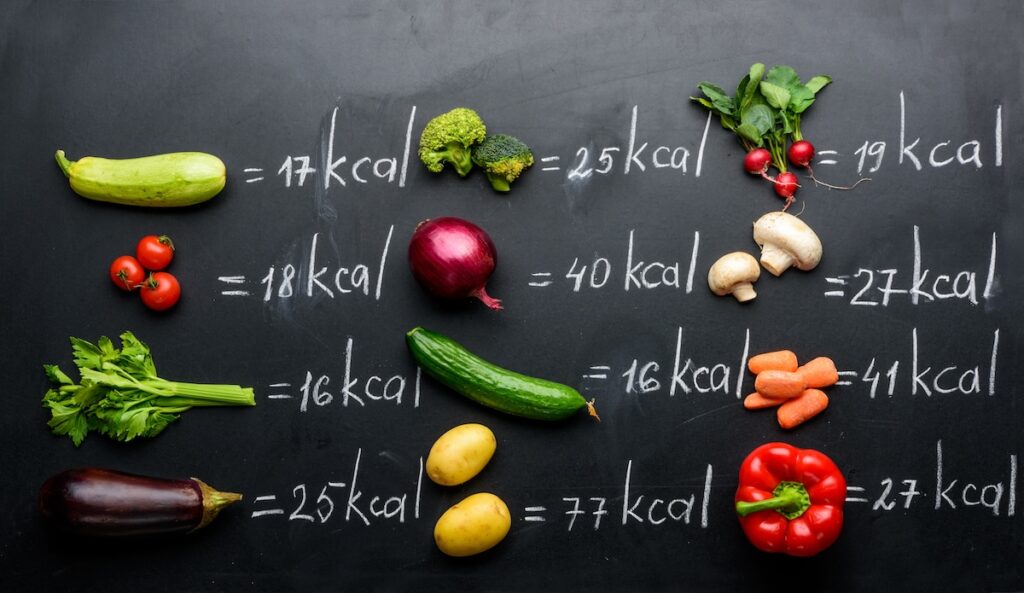
The foundation of any diet is based on the understanding of calories—units of energy that fuel every action our bodies undertake, from breathing to full-on sprinting.
For athletes, particularly cricketers, grasping the concept of caloric intake is crucial for optimizing performance and maintaining overall health.
What are Calories?
Calories are the basic unit of energy found in all food and beverages.
When consumed, the body burns these calories to sustain essential life functions and physical activity.
Technically, a calorie is defined as the amount of heat needed to raise the temperature of one kilogram of water by one degree Celsius.
In nutrition, we refer to calories from food as kilocalories (kcal), where each kilocalorie represents the energy needed to perform various activities ranging from metabolic processes to physical exertions.
For cricketers, calories are not just numbers; they represent the potential energy available to execute skills like bowling, batting, and fielding effectively.
Managing caloric intake is essential, as consuming too many or too few calories can lead to declining performance levels and health issues.
Factors Influencing Caloric Needs
Several key factors determine the number of calories a cricketer needs to consume to perform at their best.
These include:
- Age and Gender: Metabolic rates vary by age and are generally higher in males than females. Younger athletes typically require more calories due to higher metabolic rates and the demands of growing bodies.
- Body Composition: Muscle mass burns more calories at rest than fat. Athletes with higher muscle mass will, therefore, have higher caloric needs.
- Activity Level: The intensity and duration of activity significantly impact caloric requirements. For instance, fielding in a test match will have different caloric demands than a training day or a T20 match.
- Metabolic Health: Conditions such as thyroid disorders can affect how efficiently the body converts food into energy, influencing calorie needs.
- Environmental Conditions: Playing in colder climates can increase caloric needs, as the body burns more energy to maintain its core temperature.
Understanding these factors helps tailor a nutrition plan that aligns with the energy expenditures typical of various cricket formats and individual player roles.
By customising dietary and calorie intake, cricketers can ensure that their bodies are adequately fueled for ultimate performance and optimal recovery.
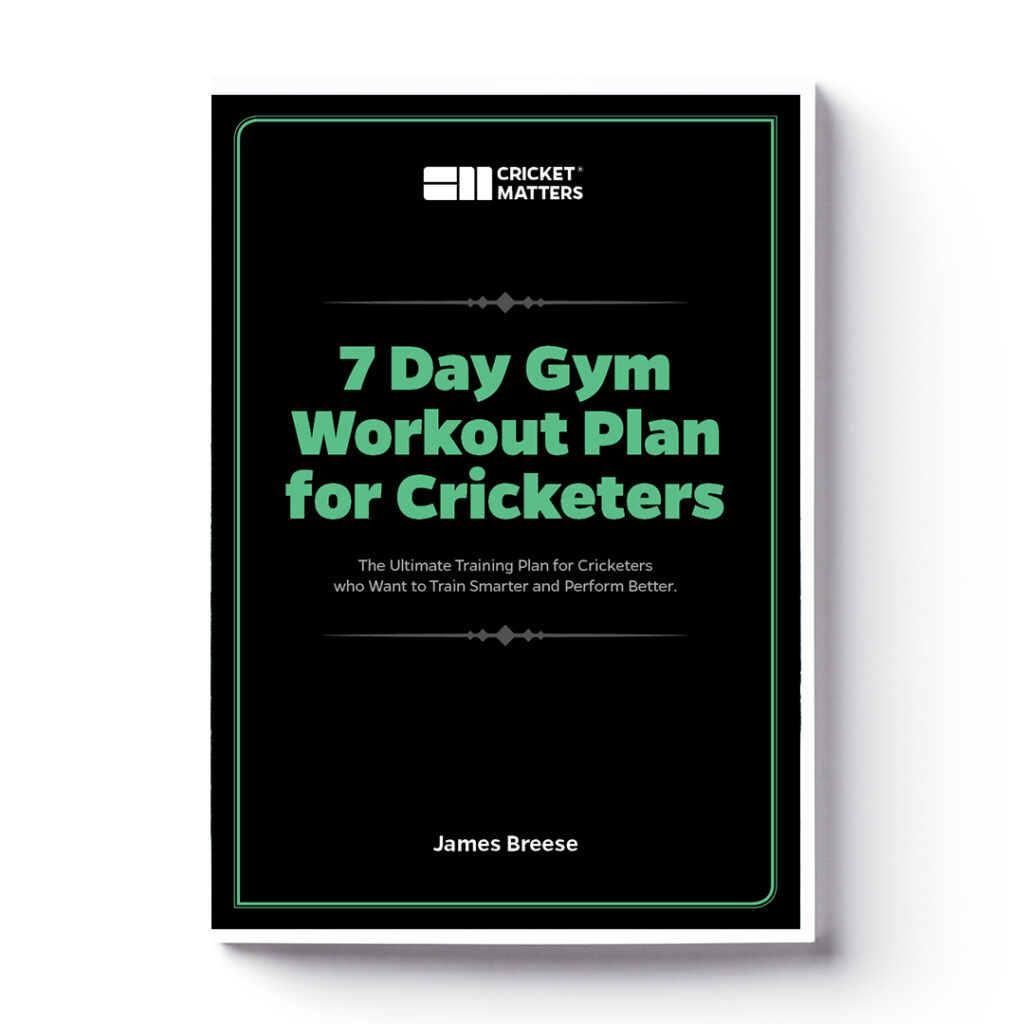
Have You Downloaded Our FREE 7-Day Gym Workout Plan?
Grab your complete step-by-step 7-day gym workout plan for cricketers today. There will be no more Guesswork. Just follow the plan and get results.
Caloric Needs for Cricketers

Cricketers’ caloric needs can vary significantly based on their role in the team, the format of the game, and the specific activities of any given day.
Understanding these needs is crucial for effective dietary planning and ensuring the best performance during practice and competitive play.
Caloric Requirements Based on Role
Each role within a cricket team—batsman, bowler, and fielder—demands different physical activities, impacting the number of calories needed.
- Batsmen: Batsmen require bursts of intense physical activity, including sprinting between wickets and maintaining concentration for long periods. Their caloric intake might not be as high as that of bowlers, but they should focus heavily on carbohydrates for energy and moderate protein for muscle repair and recovery.
- Bowlers: Bowlers, particularly fast bowlers, have the highest caloric needs among the team roles due to the energy expended in bowling overs and the physical strain of their delivery. Their diet must contain high-energy foods and proteins to support endurance and muscle recovery.
- Fielders: While it may seem that fielders have less intense roles, their need for sudden sprints and long periods of alertness also requires a carefully managed diet balanced between carbohydrates for energy and proteins for muscle maintenance.
Understanding the nuances of each role helps to tailor nutrition plans as strategically as the game plans employed on the field.
As you are beginning to see, it’s not entirely straightforward.
Differences in Caloric Needs During Training vs Match Days
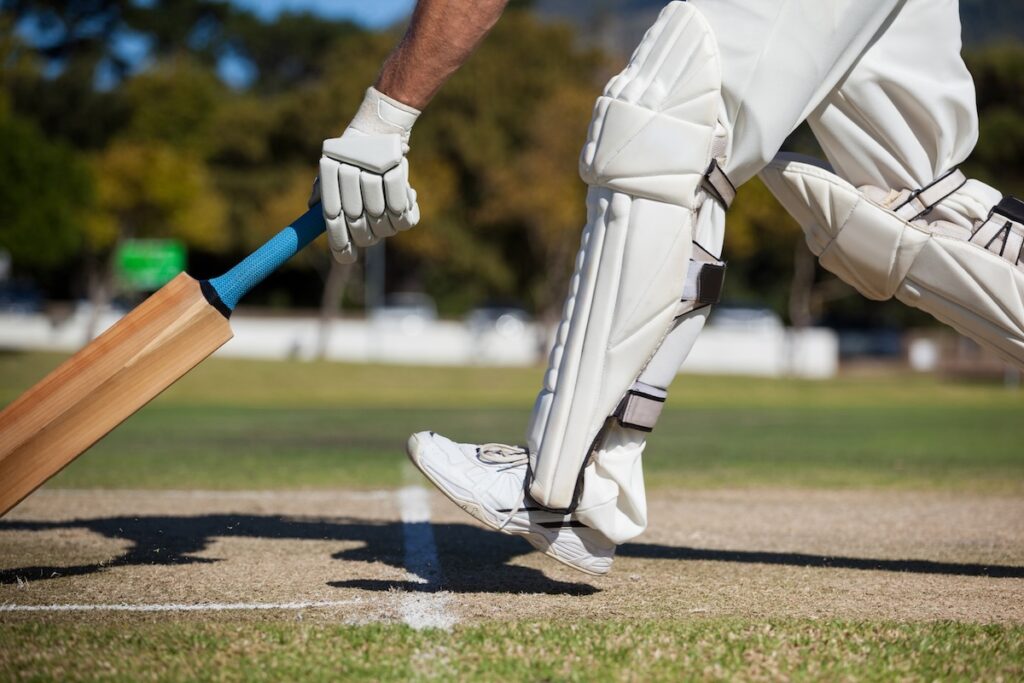
The variation in physical activity between training sessions, match days, and rest days significantly affects caloric requirements:
- Training Days: During training days, the focus is often on developing skills and fitness, which may or may not be as calorie-intensive as match days, depending on the intensity of the training. Generally, training days require a balanced intake, sufficient to support extended periods of moderate activity but adjusted to prevent excessive calorie surplus if the training is lighter.
- Match Days: Players can burn significantly more calories on matches, especially during long formats like one-day games and test matches. These days require a higher intake of calories and nutrients that support sustained energy, focus, and quick recovery during breaks. Hydration is also critical in how effectively these calories are utilized and how well players perform under pressure.
- Rest and Recovery Days: On days designated explicitly for rest and recovery, caloric needs tend to decrease as physical activity is minimal. However, it’s important not to drastically reduce caloric intake, as the body still needs energy for muscle repair and recovery. The focus should shift towards foods rich in proteins for muscle repair, antioxidants to reduce inflammation, and enough carbohydrates to maintain energy levels without overconsumption.
Adjusting caloric intake to suit the varying demands of practice, game days, and rest periods ensures that cricketers are well-fed and optimally fueled to handle the specific challenges they face in their roles, whether at the crease, in the field, or when bowling.
This strategic approach to nutrition can significantly impact a player’s effectiveness, impact and longevity in the game.
What Does Calorie Maintenance Mean?

Everything you eat and drink has a calorie count, and each calorie goes toward your body’s energy expenditure.
Your body requires a certain amount of energy daily to perform essential functions, such as muscle movement, cell growth, and energy conversion.
The energy your body needs to do all these things is your total daily energy expenditure (TDEE), or maintenance calories, sometimes called your metabolic rate.
Understanding calorie maintenance is essential whether you’re concerned about performing better, gaining weight, building muscle, or losing fat.
When you consume precisely the calories your body needs to function daily, you won’t lose or gain either fat or muscle.
Instead, you’ll maintain your current weight and form.
This is ideal if you’ve reached the end of your weight loss journey and want to maintain your current weight right where you are.
If you put more than just the maintenance level of calories into your body, you could build muscle or put on fat.
In contrast, you could lose weight if you decrease your caloric intake below your maintenance threshold.
Ultimately, it’s all about striking the right energy balance and knowing how to make slight adjustments to meet your performance goals.
You’ll frequently hear generalized calorie count recommendations for women and men, but no single maintenance calorie intake level works for everyone.
Everybody has different calorie maintenance requirements depending on size and activity levels.
James Breese
That’s right, people.
That is why there is no one-size-fits-all for dieting and why you can’t trust any online calorie counter.
So, how do you determine your maintenance calories?
Well, first, you need to have a better understanding of your TDEE.
Maintenance Calorie Formula for Cricketers
The formula for calculating your TDEE is:
TDEE = BMR + NEAT + Exercise + TEF
Seems simple enough, right? Let’s take a look at each of these components.
BMR: Basal Metabolic Rate
This is the most essential part of your TDEE.
Your BMR accounts for approximately 60 percent of your total TDEE and reflects the energy your body needs as a baseline to keep you alive.
BMR is also sometimes called your resting metabolic rate (RMR).
NEAT: Non-exercise Activity Thermogenesis
NEAT is the energy you spend doing little movements that aren’t exercising throughout the day—talking, fidgeting, waving your hands, walking, standing, etc.
This is the most adaptive component of metabolism because it increases significantly during a caloric surplus and decreases significantly during a deficit.
Mild lifestyle changes, such as climbing more stairs or parking further away from work, can make a huge difference to body shape and size, as they can significantly impact energy expenditure.
Exercise
This is precisely what it sounds like.
When you exercise, you expend calories. The amount you expend depends on the duration and intensity of the exercise.
TEF: Thermic Effect of Food
Strange but true: It costs you energy to extract energy from the food you eat daily.
Think of your body as a combustion engine.
The conversion of gasoline to energy isn’t perfect; your car has to work hard to extract energy from fuel.
Similarly, different foods require varying amounts of energy to be processed and digested.
Generally speaking, foods higher in fibre and protein have a higher TEF.
Your TDEE can vary daily depending on your activity, food intake, and other factors.
It is difficult to pinpoint a specific daily number, but this doesn’t invalidate energy balance or make this formula impossible.
It just means that the “calories out” side of the equation will have a specific error margin from day to day, and we have to take our time to figure out what it is for you to get it as close as possible.
Further Reading
Calculating Caloric Intake for Cricketers

Cricketers need a precise understanding of their daily caloric needs.
The Mifflin-St. Jeor Equation provides a reliable starting point for calculating basal metabolic rate (BMR), which can then be adjusted to account for the cricketer’s lifestyle and activity levels.
Basic Formula for Caloric Calculation
The Mifflin-St. Jeor Equation is recognized for its accuracy in estimating the BMR, the number of calories required to keep your body functioning at rest.
Here’s how it’s calculated:
- For Men: BMR = 10 x weight (kg) + 6.25 x height (cm) – 5 x age (years) + 5
- For Women: BMR = 10 x weight (kg) + 6.25 x height (cm) – 5 x age (years) – 161
These equations are considered more accurate than older methods like the Harris-Benedict Equation, especially for estimating the caloric needs of sedentary to moderately active adults.
Adjustments for Age, Weight, and Height
The Mifflin-St. Jeor Equation takes into account age, weight, and height, three critical factors that influence metabolic rate:
- Age: As you age, your metabolic rate generally decreases because muscle mass tends to decline, reducing the rate at which the body burns calories.
- Weight: The more you weigh, the higher your BMR, mainly because a larger body mass requires more energy.
- Height: Taller individuals typically have a higher BMR, which can be attributed to having more body surface area.
While the Mifflin-St. Jeor provides an excellent baseline, but it’s not perfect.
It does not account for muscle mass beyond the basic implications of height and weight, which can be a significant factor in athletic populations.
Moreover, it assumes a standard level of fat mass, which may not be accurate for all athletes.
However, it proves to be a great starting point from which to work.
Adjusting for Activity Levels
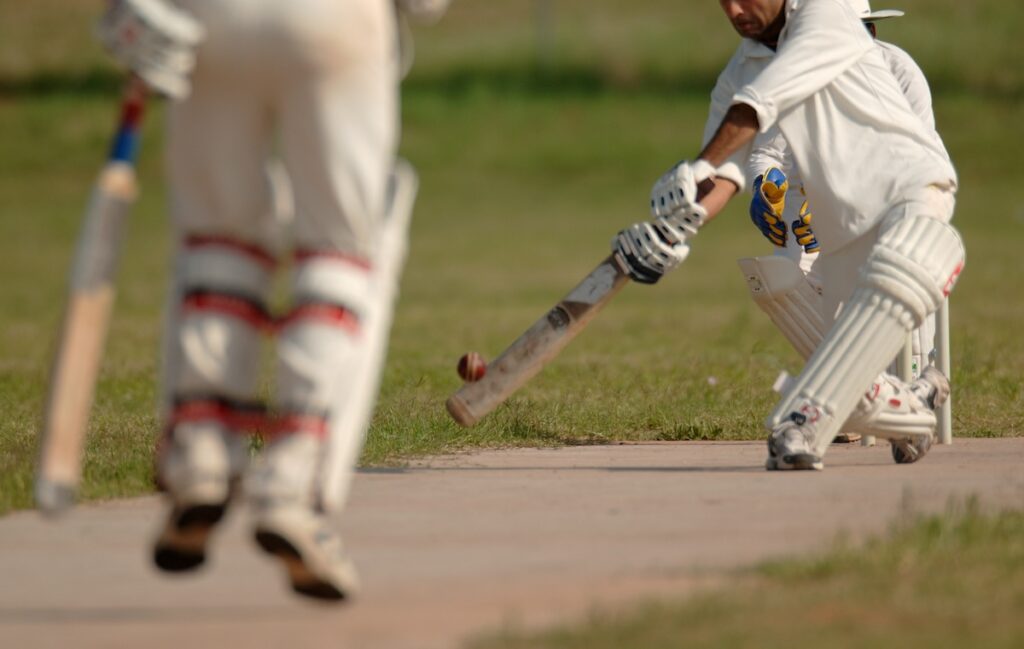
Once the Basal Metabolic Rate (BMR) is calculated using the Mifflin-St. Jeor Equation, the next step is to adjust this number based on the cricketer’s activity level to calculate their Total Daily Energy Expenditure (TDEE).
This adjustment accounts for everything from daily living activities to intense physical training. Here’s how each activity level modifies the BMR:
Sedentary (BMR × 1.2)
- Description: This multiplier is used for days with minimal to no exercise—typically rest or recovery days. The main activities are limited to daily living tasks such as walking around the house, doing chores, or sitting.
- Application for Cricketers: This is ideal for off-season or rest days when physical activity is significantly reduced to focus on recovery.
Lightly Active (BMR × 1.375)
- Description: This level is for days involving light exercise or sports 1-3 days per week. It includes short practice sessions, leisurely playing sports or light drills.
- Application for Cricketers: Suitable for regular training days that involve less intense practice sessions or during the early stages of recovery from injury where activity is necessary but not strenuous.
Moderately Active (BMR × 1.55)
- Description: This factor is used for moderate exercise or sports 3-5 days per week. It encompasses more prolonged and intense training sessions but not at the peak level of competition or intensity.
- Application for Cricketers: Best for typical training days that involve comprehensive batting, bowling, and fielding practice, which demand higher energy expenditure.
Very Active (BMR × 1.725)
- Description: This multiplier should be applied for hard exercise or sports 6-7 days a week. It reflects a high physical activity that includes prolonged, intense training sessions.
- Application for Cricketers: It is appropriate for intense training phases or during competitive match days, especially in shorter formats like T20, where the intensity and frequency of physical exertion are high.
Extra Active (BMR × 1.9)
- Description: This is the highest level of activity considered, and it is used for very hard exercise twice a day (including extra physical jobs) or marathon training.
- Application for Cricketers: Suitable for long matches such as one-day internationals or full days of test matches, where players are engaged in almost continuous high-intensity activity, including bowling long spells or fielding throughout the day.
Tailoring to Individual Needs
Cricketers must note that these activity multipliers provide estimated values and should be tailored based on individual experiences and energy requirements.
Factors like metabolic adaptations, personal health, and climate conditions can affect caloric needs.
Regular consultation with a sports nutritionist or dietician can help refine these estimates to align with personal health goals and performance objectives.
We’re here to help, too, with our nutrition coaching services for cricketers.
By understanding and applying these activity level adjustments, cricketers can better manage their energy intake, ensuring they are optimally fueled to play their best and recover optimally, tailored to the demands of their training and match day schedules.
The Best Method: Time and Patience

At Cricket Matters, we advocate spending several weeks on maintenance calories to determine whether you are maintaining your weight.
We recommend tracking your food, weighing in daily, and then taking the average of those weights after a week.
You can get a pretty good idea of your maintenance calories by measuring your body fat percentage weekly, based on how much you gain or lose on a specific calorie amount.
For example, if you consumed 3,000 calories daily for four weeks and lost two kilograms of fat, you can use that data to calculate your approximate maintenance calories.
It’s not a perfect method, but it will get you close.
Over the years, when applying this method, we’ve noticed two things:
- Women tend to undereat grossly.
- Men tend to overeat grossly.
Each of these examples represents significant issues.
We have to train men to eat less, and we have to train women to eat more and perform what we call a reverse diet.
The crux remains: If they had known their maintenance calories in the first place, it would have provided a more stable environment for starting the dieting process.
To leave you with the best nutritional advice I’ve ever received: Figure out your maintenance calories.
It makes dieting, losing weight, and gaining weight much more straightforward and makes performing better on the field easier.
And if you struggle with math, we’re always here to help via our coaching programs.
Match Day Deficit: The Underfed Cricketer’s Struggle
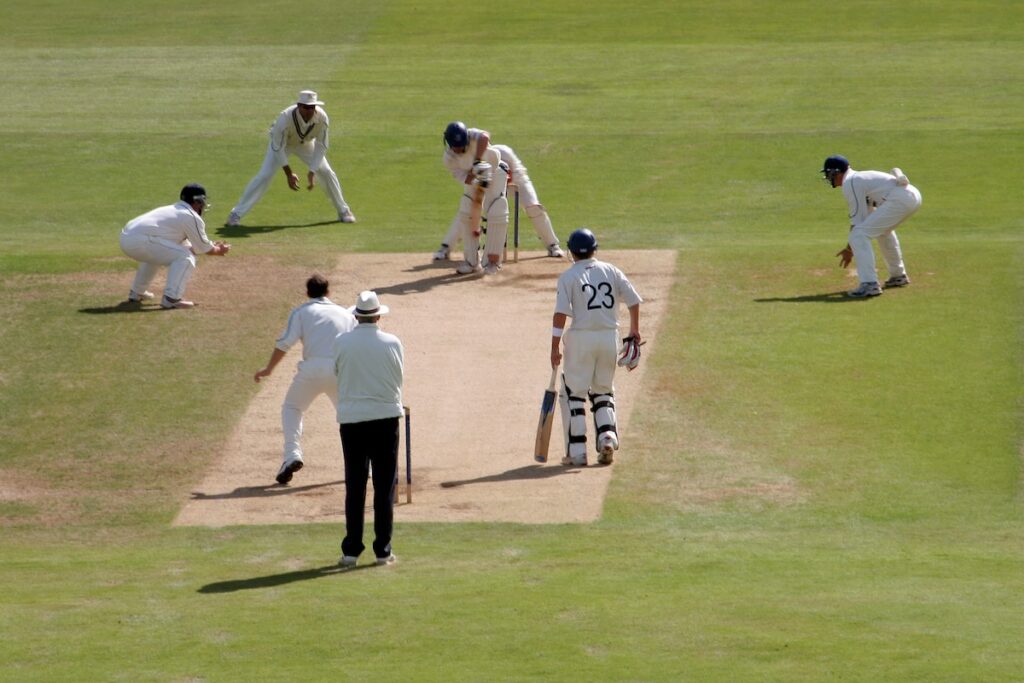
Recent studies across various sports disciplines have consistently shown that professional athletes often do not meet their energy and macronutrient needs on game days.
This discrepancy between energy intake and the vigorous energy expenditure required during competitive play can lead to significant health and performance issues.
Historical and Contemporary Studies
Historically, research conducted by Kobayashi & Sakamoto in 1981 demonstrated that professional baseball players exhibited notably low energy intakes relative to the demands of their rigorous exercises, notably lacking in carbohydrates and proteins.
These macronutrients are fundamental for maintaining muscle function and preventing conditions such as anaemia, which can severely impact an athlete’s capacity to perform and recover.
Furthermore, a more recent 2023 study by Dasa et al. on female soccer players highlighted a troubling trend.
These athletes consumed only 2274 kcal/day, whereas their energy expenditure during competitive periods was significantly higher at 2918 kcal/day.
This resulted in a negative energy balance that could lead to performance detriments and longer-term health complications.
Implications for Cricket
These findings underscore a critical oversight in the nutritional planning for athletes in high-performance sports, including cricket.
Cricket players, particularly during intensive training sessions and match days, will likely experience similar challenges.
Sufficient caloric intake and the right balance of macronutrients are essential to sustain their performance over long periods.
Call for Further Research
There is a pressing need for more comprehensive studies focused on cricketers’ dietary habits and nutritional adequacy.
It is crucial to understand cricket’s unique demands, which can range from prolonged multi-day Test matches to high-intensity T20 games.
Such studies would help develop tailored nutritional strategies that ensure cricketers maintain a positive energy balance and optimal health during peak and off-season periods.
Monitoring and adjusting the diets of professional athletes, particularly on game days, is paramount.
Nutritionists and sports scientists must work closely with athletes to ensure their diet adequately supports their energy expenditure.
This is not just about enhancing performance but also about safeguarding their long-term health and well-being.
It’s something to think about for all cricketers.
Final Thoughts

Understanding and managing caloric intake is crucial for cricketers striving to optimize performance on match days and maintain health throughout their careers.
The insights we’ve explored, from calculating maintenance calories with the Mifflin-St. Jeor equation to addressing the common pitfalls of under-eating on game days, provides foundational knowledge that can significantly impact a cricketer’s ability to perform and recover.
However, recognizing that no formula is perfect underscores the importance of personalization and regular consultation with nutrition professionals.
As we’ve seen, tailoring nutrition strategies to individual needs and specific match demands enhances performance and improves an athlete’s long-term health and career longevity.
As always, if you need help with your nutritional needs for cricket, book a free strategy call with the team so we can potentially help.
Further Reading
FAQs
How Many Calories Does a Cricketer Need?
The number of calories a cricketer needs varies depending on several factors, including the type of cricket being played (e.g., test matches require sustained energy over several days, while T20 games might require bursts of intense energy), the player’s role (bowlers often need more calories than batsmen), and individual characteristics like age, gender, body composition, and overall metabolic rate. Typically, a cricketer might need anywhere from 2,500 to 4,500 calories per day, adjusted according to training, match schedules, and personal health goals.
What Are Maintenance Calories for Cricketers?
Maintenance calories refer to the energy measured in calories a cricketer needs to consume to maintain their current weight without gaining or losing. These calories support the body’s essential metabolic functions, such as breathing, circulation, cell production, nutrient processing, and the energy expended during physical activities. Understanding their maintenance calorie level is crucial for cricketers because it helps in planning diets that support training demands and match performance and overall recovery.
How Does a Cricketer Calculate Their Daily Caloric Needs?
A cricketer can calculate their daily caloric needs by first determining their Basal Metabolic Rate (BMR) using the Mifflin-St. Jeor equation considers their weight, height, age, and gender. After calculating the BMR, the next step is to adjust this number based on their activity level using specific multipliers (ranging from 1.2 for sedentary activities up to 1.9 for extra-active days). For example, training and match days may require different multipliers to reflect energy expenditure accurately. This approach helps cricketers tailor their caloric intake based on daily activity levels and ensures adequate energy for performance and recovery.
What Factors Affect the Caloric Needs of a Cricketer?
Several factors influence the caloric needs of a cricketer: age and gender affect metabolic rate; body composition impacts how calories are burned (muscle mass burns more calories than fat); activity level dictates the total daily energy expenditure, with more active days requiring more calories; metabolic health, such as thyroid function, can alter how efficiently calories are converted into energy; and environmental conditions (like playing in colder climates) can increase caloric needs as the body works harder to maintain its core temperature.
Why Is It Important for Cricketers to Avoid a Caloric Deficit on Match Days?
Avoiding a caloric deficit on match days is vital for cricketers because insufficient caloric intake can lead to reduced energy levels, decreased concentration, and impaired muscle function, which can significantly hinder performance. A caloric deficit can also increase the risk of injuries and slow down recovery times, making it harder for athletes to compete effectively and recover quickly between matches.
How Can Cricketers Ensure They Are Consuming Enough Calories on Game Days?
Cricketers can ensure they consume enough calories on game days by planning nutrient-dense meals that balance carbohydrates, proteins, and fats. Carbohydrates are essential for energy, while proteins support muscle repair and recovery. Staying hydrated is also crucial, as dehydration can affect energy levels and physical performance. Monitoring caloric intake with the help of nutritionists or using dietary apps can also help cricketers meet their caloric needs effectively.

![[Calculator] How Many Calories Does a Cricketer Need? 2 Calories for Cricketers](https://www.cricketmatters.com/wp-content/uploads/2024/05/Calories.png)

